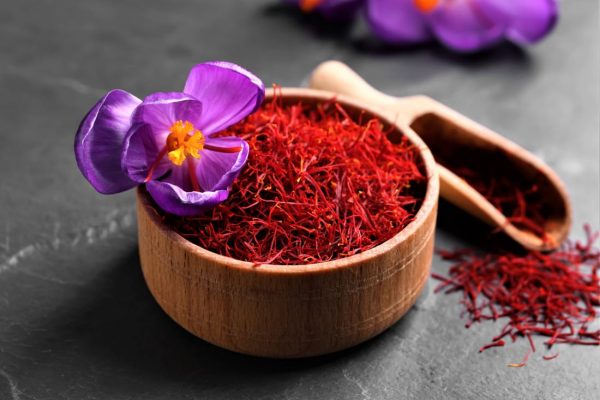
Saffron, often called “red gold,” is the most expensive spice in the world, cherished for its exquisite aroma, deep golden hue, and delicate floral flavor. From ancient civilizations to modern kitchens, saffron has remained a prized ingredient, adding a touch of luxury to dishes across cultures. But what makes this spice so rare and valuable? Let’s explore the fascinating journey of saffron—from its delicate harvesting process to its culinary and medicinal significance.
The Labor-Intensive Harvesting of Saffron
Saffron comes from the flower of Crocus sativus, a plant that blooms for only a few weeks in autumn. The spice itself is derived from the flower’s three tiny crimson stigmas, which must be handpicked with extreme precision. Each stigma weighs only a few milligrams, meaning it takes around 150,000 flowers to produce just one kilogram of saffron. Farmers must carefully pluck the stigmas in the early morning hours before the sun causes them to wilt, making the process highly labor-intensive and time-sensitive. This meticulous harvesting method is one of the key reasons why saffron is so expensive.
A Spice Steeped in History
Saffron’s history dates back over 3,500 years, with its origins believed to be in the Mediterranean, Persia (modern-day Iran), and South Asia. Ancient civilizations, including the Greeks, Romans, and Persians, valued saffron for its medicinal, culinary, and even cosmetic uses. It was used as a perfume, fabric dye, and even an aphrodisiac. In Sri Lanka, saffron has long been associated with Ayurvedic medicine, believed to enhance digestion and boost overall well-being.
The Unique Flavor and Aroma of Saffron
Saffron has a distinctive taste that is both floral and slightly earthy, with hints of honey and hay-like sweetness. Its deep red color comes from a compound called crocin, which also gives the spice its mild bitterness. When added to food, saffron imparts a beautiful golden hue and an unmistakable depth of flavor, making it a key ingredient in luxurious dishes worldwide.
How to Identify Pure Saffron
Due to its high value, saffron is often adulterated with cheaper substitutes like turmeric or safflower. To ensure you’re buying pure saffron, look for these signs:
- Smell: Authentic saffron has a floral and honey-like aroma, while fake saffron may have a musty or metallic scent.
- Appearance: Real saffron threads are deep red with a slightly trumpet-shaped end, not uniform in color.
- Taste: Genuine saffron is naturally bitter at first, then develops a musky sweetness.
Saffron in Sri Lankan Cuisine
While not a traditional ingredient in Sri Lankan cuisine, saffron is occasionally used in gourmet dishes and modern fusion recipes. Some upscale restaurants and home cooks incorporate it into rice dishes, seafood, and specialty beverages for its rich color and delicate aroma. Due to its high cost and rarity, saffron remains a luxury ingredient rather than a staple in Sri Lankan cooking.
Saffron is more than just a spice—it is a symbol of luxury, tradition, and culinary excellence. Its delicate harvesting process, unique flavor, and cultural significance make it a treasured ingredient in kitchens worldwide. Whether used in savory dishes, desserts, or warm beverages, saffron continues to captivate the senses and remain one of the most sought-after ingredients in the world.